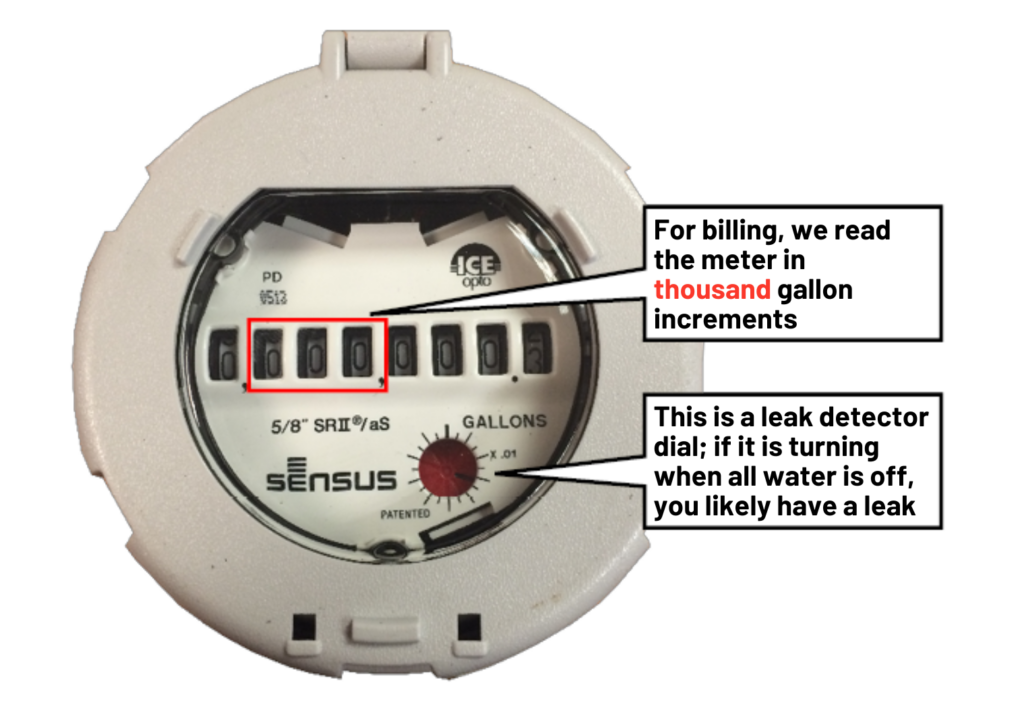Water meters are located in concrete boxes and usually found at the property line either in front of or behind the residence. It’s a good idea to locate your meter box and acquaint yourself with turning your water supply off and on before a broken pipe emergency occurs at your home. This may require using a tool to turn the valve.
Meter readers need to be able to read and maintain meters so please keep meters accessible by clearing vegetation and other obstructions from around the box.
Reading Meters
While we have begun installing meters that are read via radio signals, most of our existing meters require reading and entering the data into a hand-held recording unit. The information from these recorders is then downloaded at the office and reviewed. Typically, readings are accurate; however, if a reading seems questionable, the meter is re- checked. Because we have a continuous record of meter readings, an inconsistent reading is generally detected quickly.
Meter readings are used to determine the amount of water used at each location during the previous month. The displays on the meters look and function similar to an odometer on a car. Rather than returning to zero each time they are read, water usage in a given month is computed based on the change registered by the meter since the last time it was read.

For instance, when the meter reader records the water consumption, they record how many thousand gallons have gone through the meter for the month, which means that if 5,400 gallons were used since the last reading, only 5,000 gallons would be on the bill. The remaining 400 gallons will be included in the next bill once the meter reaches the next 1,000-gallon mark. This method may cause your water bill to fluctuate, depending on the timing of your water usage.
Questions?
Call 541-774-2430 or email Customer Service with additional questions.